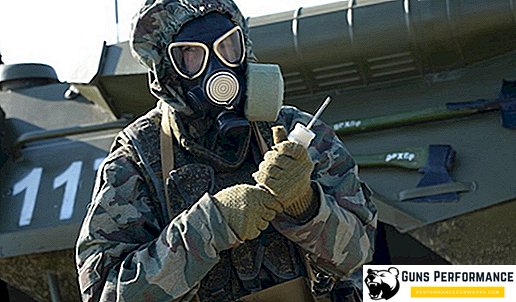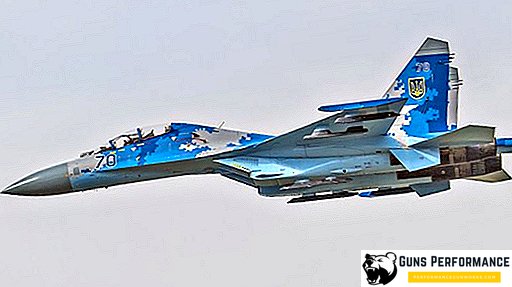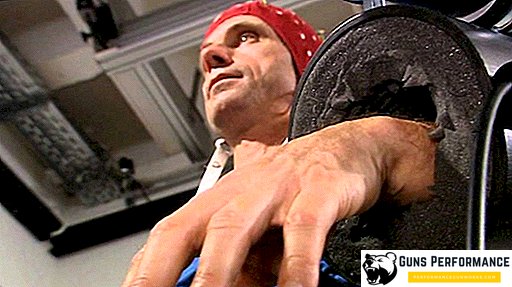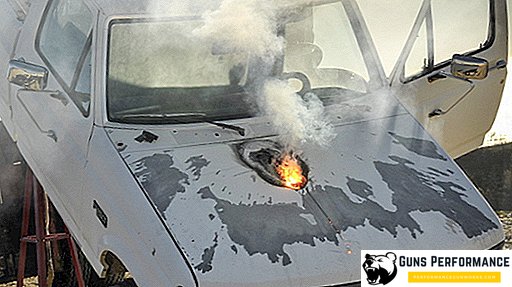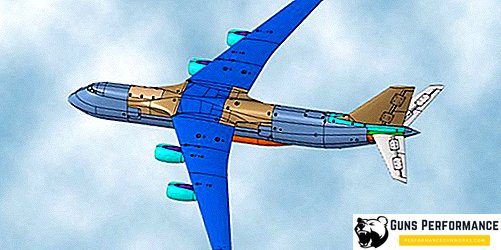Ground forces are the backbone of the army of any country in the world, and the Russian army is no exception. The ground forces of the Russian Federation are one of the three main types of troops of the Armed Forces of Russia, their main task is to conduct combat operations on land.
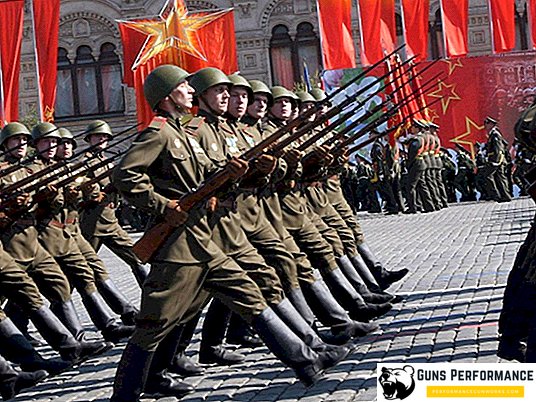
Ground forces are the most ancient type of troops. In Russia, their story begins with the XIII century. The day of the land forces in our country is celebrated on October 1. This date was not chosen at random: on October 1, 1550, Tsar Ivan IV the Terrible issued a decree on the creation of a regular army from among the chosen service people. Therefore, in 2006, the decision of the President of the Russian Federation on this day was established holiday "Day of the Ground Forces". Every year on October 1, Russians pay tribute to the memory of the soldiers who died while defending the Fatherland.
Ground Forces of the Russian Federation: structure and strength
The ground forces of the Russian Federation for 2018 had a population of about 300 thousand people. Since 2014, the commander of the Ground Forces is O.L. Salyukov.
The goals and objectives of the Ground Forces can be divided into three groups:
- in peacetime;
- in a threatened situation;
- during the war.
During the peace period, the Ground Forces are obliged to maintain a high level of combat training, to ensure constant readiness for operational and mobilization deployment, to create a stock of weapons, ammunition and military equipment in case of war. During the peace period ground forces participate in peacekeeping missions.

In a threatening period, the Ground Forces are increasing their numbers, provide conditions for operational deployment, prepare military equipment and weapons for the future conflict, hold defensive measures, and increase the training of human reserves.
In time of war, the Land Forces are deployed, the main task during this period is to repel the enemy’s aggression and defeat it.
The composition of the Ground Forces includes several types of troops:
- motorized rifle;
- tank;
- rocket troops and artillery;
- Air Defense Forces of the Ground Forces;
- special troops.
Each of the above types of troops has its own structure.

Ground forces of the Russian Federation are divided into four districts. The territorial structure of the NE of Russia is as follows:
- Western Military District (two armies with headquarters in St. Petersburg and Voronezh);
- Central Military District (two armies with headquarters in Samara and Novosibirsk);
- Southern Military District (two armies with headquarters in Stavropol and Vladikavkaz);
- Eastern Military District (it includes four armies, headquarters are located in Ulan-Ude, Belogorsk, Chita and Ussuriysk).
Armies consist of divisions, brigades, regiments, battalions, companies and platoons.
The ground forces of the Russian Federation can be divided into three components. The first includes the command and control bodies (headquarters) and communications, military units of constant readiness, which can perform limited tasks even in peacetime. Such units are given special attention in terms of manning (mainly contract soldiers), military equipment and weapons.
The second component includes parts of reduced composition, which can perform limited tasks in peacetime. In wartime conditions, such units should be the basis for the deployment of the army.

The third component includes strategic reserves.
Such a structure of the Ground Forces is optimal, since it allows to save public funds, while constantly possessing forces sufficient for use in local conflicts.
Military-industrial complex
Before turning to the description of the types of troops, a few words should be said about the Russian military industry, as applied to the needs of the Ground Forces.
Russia inherited from the USSR the most powerful military-industrial complex capable of fully meeting the needs of the domestic armed forces. Moreover, the Russian Federation is one of the largest players in the arms market, and most of the domestic products sold on world markets are military equipment and weapons for ground forces.

The Russian military-industrial complex fully meets the needs of the ground forces for small arms and ammunition, armored vehicles (armored personnel carriers, infantry fighting vehicles, tanks and other combat vehicles), artillery weapons and rocket technology. This list can be continued.
Dozens of design bureaus and production associations operate in Russia, which develop, test, produce and modernize military equipment and weapons.
Most of the weapons that are currently used in the Land Forces of the Russian Federation were developed in Soviet times. However, in the past few years, active modernization of the armed forces, including the Ground Forces, has been carried out.
Russian motorized rifle troops
The ground forces of Russia are motorized rifle troops. This branch of service appeared in 1963. The main feature of the motorized rifle troops is their high level of mobility and firepower.
Motorized rifle troops of Russia are equipped with both Soviet-made weapons and modern types of equipment created in recent years. This allows them to effectively hit all kinds of targets.

In the motorized rifle troops, in addition to the main units, there are tank, anti-aircraft, artillery, anti-tank units. There are also special-purpose units that can perform various tasks, including logistics, as well as in-depth reconnaissance in the rear of the enemy. All of the above significantly increases the firepower of this type of troops.
The main advantage of motorized rifle troops is their high mobility, which allows motorized riflemen to move from one type of combat to another in the shortest possible time and ensures their extraordinary tactical versatility. Motorized rifle units can alternate maneuver and strike, quickly focus in the right place and spread out if necessary.
Today, the Russian motorized rifle units are armed with modern small arms, infantry fighting vehicles (BMP-1, BMP-2, BMP-3), armored personnel carriers (BTR-70, BTR-80, BTR-90), fully provided with road transport, including his newest samples. In the armament of motorized rifle units there are reconnaissance vehicles, anti-tank and anti-aircraft systems (both portable and self-propelled) and other types of weapons.

Motorized rifle troops of Russia participated in the civil war in Tajikistan on the side of government troops, was the basis of federal forces during the Chechen campaigns. Motorized rifle units took part in the war in Georgia in 2008.
Currently, a new line of armored vehicles on the universal base "Kurganets" is being developed specifically for the Ground Forces, which is planned to be launched into production in the near future.
Tank troops of the Russian Federation
According to modern military doctrine, tank forces are the main striking force of the Ground Forces. Russia inherited from the USSR mighty tank forces and several powerful tank building centers. Back in 2005, 23 thousand tanks of various types and modifications were in service with the Russian army. Gradually, they were removed from service, in 2009, officially only 2,000 vehicles remained in the ranks.

The main task facing the military leadership of the country in the first decade of this century was the modernization of the tank fleet inherited from the Soviet Union. One of the priority tasks for the development of tank forces from 2005 to 2010 was the arming of tank units with the latest T-90 type vehicles.
At the same time, work was carried out to create a new generation of combat vehicles. In 2011, the purchase of old equipment decided to stop and concentrate on the development of a new combat platform "Armata".
According to the official website of the Ministry of Defense of the Russian Federation, today the T-72 tanks (of various modifications), T-80 and T-90 tanks are in service with the Russian army. In addition, the conservation is a large number of tanks of old models. According to some sources, there are about 8 thousand of them.

Recently, the newest Russian tank of the latest generation, the Armat, was shown to the general public. On its basis, they plan to create a whole family of new combat vehicles. Currently there are state tests of this technology.
In addition to tank formations, the composition of tank forces also includes motorized rifle (mechanized), missile, artillery and anti-aircraft units. As part of the tank units are engineering services, parts of electronic warfare, automotive units. They can be given attack and transport helicopters.
Tank troops combine high maneuverability and fire power, are highly resistant to weapons of mass destruction.
Although the importance of tank forces has relatively decreased in recent decades, they still remain the main striking force of the Ground Forces and will undoubtedly retain their importance in the coming decades.

Modern tanks are able to overcome water obstacles, carry out active hostilities during the day and at night, make rapid marches.
Every second of September, Russia celebrates the Day of the Tankman, remembering the invaluable achievements of armored troops in past wars and their significant role in strengthening the country's defense capability in our days.
Rocket troops and artillery
This branch of service also appeared in the early 60s of the last century. It consists of operational tactical missile formations, tactical missile formations, large-caliber rocket artillery, as well as cannon, rocket and howitzer artillery. The rocket troops include mortar units and artillery reconnaissance, supply and control units.

It is written in military doctrine that this branch of the military is the main means of inflicting fire on the enemy in battle. Missile wax and artillery can also use weapons of mass destruction.
Today, the Missile Forces are armed with a large number of artillery and rocket armament samples, mainly developed in the Soviet years.

The most known to the general public are the multiple launch rocket systems (MLRS) Grad, Smerch, and Hurricane. They were used by Soviet troops during the Afghan war, they went through both Chechen campaigns and proved to be a very reliable and effective weapon.
New developments include the MLRS Tornado and Iskander operational missile system.

Air Defense Forces of the Ground Forces of the Russian Federation
In recent decades, the role of combat aviation has increased significantly. Aircraft have become faster, less noticeable and more deadly. That is why there was a need for a separate branch of troops, whose task is to cover ground forces during hostilities or on the march. Ground Forces Air Defense Forces also provide cover for military and civilian facilities in the near rear.
We should not confuse the defense of the Ground Forces and the air defense, which protects the entire territory of the country - these are two different types of troops.

The task of the Air Defense of the Ground Forces is to detect enemy air strikes against covered troops and their destruction. In addition, air defense forces are responsible for missile defense in their cover area.
The date of birth of the air defense of the Ground Forces can be called October 1941, it was then that the decision of the military command of the entire air defense system was divided into front-line and general, whose task was to defend the objects in the Soviet rear.
The air defense forces of the Ground Forces are armed with anti-aircraft systems that allow them to fight air targets at all ranges of altitudes and speeds.

The long-range air defense systems include various modifications of the S-300 complex, which have a range of aerial targets of up to 100 km. The anti-aircraft complexes operating at medium distances include modifications of the Buk and Kub complexes. The range of their defeat is about 30 km (the last “Buk” - 70 km), the height of interception of the newest versions of the “Buk” exceeds 50 km.
The Tor system (various modifications) and the Circle also belong to anti-aircraft missile systems that can destroy targets at a distance of up to 30 km. Currently, the modification of outdated systems "Thor" to more modern ones is underway.
The air defense forces are also armed with a close combat system, which allows them to destroy air targets at distances of up to 10 km. These include various modifications of the Strela anti-aircraft complex. There are also portable anti-aircraft complexes (MANPADS) that can be used at relatively short distances. These include MANPADS "Strela", "Needle" and "Verba". The last anti-aircraft missile system was adopted in 2014.

In addition to rocket systems, there are cannon and rocket-gun anti-aircraft systems ("Tunguska", "Shilka").
The main problem of the Air Defense Forces of the Ground Forces is the heavy deterioration of the main part of the armament. 50% of all systems are in operation for more than 30 years. Modernization is too slow.
Future anti-aircraft officers are trained in a specialized academy in Smolensk.
Special Ground Forces
The composition of the Ground Forces of the Russian Federation includes several types of special forces. These include:
- railway troops;
- chemical, biological and radiation protection (RCBZ) troops;
- pipeline troops;
- engineering troops;
- automotive troops;
- road troops;
- Signal Corps.

Military conflict is not only a soldier with a weapon in a trench or behind the levers of a tank. Modern war is primarily a logistical task. In order for a fighter on the front line to fight and effectively destroy an enemy, there is much to be provided for him. And above all, deliver him on the battlefield.
Automobile, railway and road troops are directly involved in transporting personnel, military equipment and material resources.

Engineering troops are engaged in the construction of fortifications, overcoming water obstacles, installing and neutralizing minefields. The engineering troops include engineering intelligence units.
RCBZs are designed to eliminate the consequences of the use of weapons of mass destruction by the enemy. This type of troops is also used to eliminate the effects of man-made disasters.

Pipeline troops are designed to lay trunk pipelines and supply troops with fuel and lubricants. The task of these units is to supply a sufficient amount of fuel for tens and hundreds of kilometers.
The main task of the liaison forces is to ensure coordination between various military units and structures. It is precisely the well-established communication that makes it possible to promptly control the troops, use various types of weapons in a timely manner, and avoid retaliatory strikes by the enemy.




